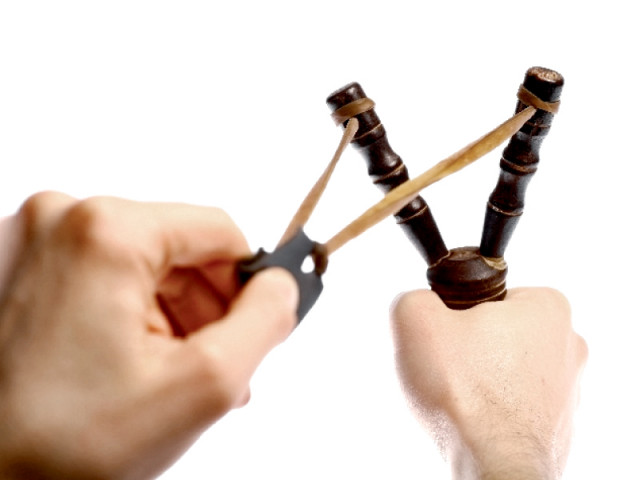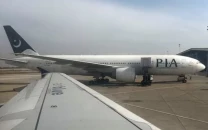Ready, aim, fire: Tirah’s slingshots sail through history with flying colours
What few outside the region realise is it also has another kind of arsenal to offer. Handmade slingshots.

Tirah Valley in Khyber Agency has many attributes it could be known for, such as its fertile lands, crystal waters or even its delicious apricots, but it has ended up infamous for its hashish, opium and seditious activities. What few outside the region realise is it also has another kind of arsenal to offer. Handmade slingshots.
The valley was also famed for its sword blades, forged at the Mirzakhani factory. However, the small slingshot made it through the years—unlike the blades—and those made in Tirah are still considered the best, the most durable.
The small market which sells slingshots in Namak Mandi has both the cheaper varieties as well as those made in the lush green vale, crafted from local wood and ornamented by Tirah’s craftswomen.

The Tirahawal slingshot, known locally as mashkanry lenda, is also known for its durability. It is supplied at around Rs250 a piece to wholesalers. And as yet, every effort to copy it by local dealers has failed miserably.
The area once forged the finest sword blades anywhere in the subcontinent at the Mirzakhani factory.
A weapon of choice
If the idea of slingshots sounds outdated, a chat with 16-year-old Kaleemullah, who left school to join his father’s business, will prove otherwise.
According to the teenager and his father, Namak Mandi is the largest slingshot market in the country. Kaleemullah added they supply as far as Quetta, but their largest market is the Federally Administered Tribal Areas (Fata), especially the mountainous regions.
Most consider the slingshot a toy for children, but adults use it to kill time, drive away birds harmful to fruit orchards and even to hunt. Crows are considered the most pesky when it comes to destroying fruit and vegetable plants.

“Different kinds of birds are considered pests for different types of crops and the slingshot is the most cost-effective way to keep them off your land,” Jamil, another dealer, tells The Express Tribune.
Sliding scales of demand, supply
“There are only 10 shops in the (Namak Mandi) market, but it is still the largest of its kind in the country,” he adds.
“On a good day, we supply at least 200 dozen of these catapults in wholesale,” he says. However, Jamil points out local retail sales dwindled considerably over the last decade.
“In the past, let’s say 12 years ago, I used to sell at least 50 pieces in retail locally, but the number has dropped to 20 these days.” Jamil explains the air gun has replaced slingshots in Peshawar and other urban settings. “It’s not even common as a toy anymore.”
Put together
With the cost of the parts of a slingshot varying on the intricacy of the wood carving or the quality of the rubber sling, the handy little catapult can be bought for as low as Rs10 and as high as Rs500.
Some of the V-shaped handles are made by local carpenters. The metal ones are imported from China while the plastic handles come from Lahore. As does the elastic rubber slings, salvaged from scrapyards.
So, the next time you come across a fancy slingshot, chances are it’s a mashkanry lenda. However, if it looks plain and feels cheap, it’s not from Tirah.
Published in The Express Tribune, December 2nd, 2014.













COMMENTS
Comments are moderated and generally will be posted if they are on-topic and not abusive.
For more information, please see our Comments FAQ